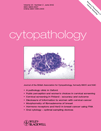
CYTOPATHOLOGY
Scope & Guideline
Bridging Science and Practice in Cytopathology
Introduction
Aims and Scopes
- Diagnostic Accuracy in Cytopathology:
The journal aims to improve diagnostic accuracy in cytopathology through the publication of research that evaluates and compares different diagnostic techniques, including fine needle aspiration cytology (FNAC) and liquid-based cytology. - Emerging Techniques and Technologies:
A significant focus is on innovative methodologies, including the application of artificial intelligence, telecytology, and molecular profiling techniques to enhance diagnostic capabilities. - Interventional Cytopathology:
The journal includes studies on interventional cytopathology, highlighting the integration of cytopathology with imaging techniques and the role of cytotechnologists in rapid on-site evaluations. - Cytopathology in Cancer Diagnosis and Management:
Research published often investigates the role of cytopathology in the diagnosis and management of various cancers, exploring the cytological features of neoplasms and the implications for treatment. - Standardization and Reporting Systems:
The journal emphasizes the importance of standardization in cytological reporting, contributing to the development and validation of reporting systems like the Bethesda System and the Milan System.
Trending and Emerging
- Integration of Artificial Intelligence:
The use of artificial intelligence in cytopathology is gaining traction, with studies exploring its potential to enhance diagnostic accuracy and efficiency in cytological evaluations. - Molecular and Genetic Profiling:
There is a growing emphasis on the application of molecular techniques, including next-generation sequencing and biomarker testing, to inform diagnosis and treatment strategies in cytopathology. - Telecytology and Remote Evaluations:
The adoption of telecytology and remote evaluation methods has increased, particularly in response to the COVID-19 pandemic, highlighting the need for flexible diagnostic solutions. - Interdisciplinary Approaches:
Emerging themes include collaborative studies that link cytopathology with other specialties, such as oncology and radiology, to enhance patient management and outcomes. - Focus on Rare and Uncommon Tumors:
There is an increasing interest in documenting and researching rare and unusual tumors through cytological examinations, reflecting a commitment to broadening the understanding of diverse neoplastic conditions.
Declining or Waning
- Traditional Cytological Techniques:
There is a noticeable decrease in publications focused solely on traditional cytological techniques, such as conventional smear preparations, as the field shifts towards more advanced methodologies like liquid-based cytology and molecular techniques. - Non-specialized Cytology Applications:
Research that does not focus on specific or advanced applications of cytopathology, such as general cytological assessments without clear clinical implications, appears to be waning. - Conventional Histological Correlations:
As cytopathology becomes more sophisticated with molecular and genetic profiling, the reliance on conventional histological correlations in cytopathological studies is decreasing.
Similar Journals

Clinical Neuroradiology
Leading the Way in Neuroradiological Discoveries.Clinical Neuroradiology, published by SPRINGER HEIDELBERG, is a leading journal in the fields of neurology and radiology, focusing on the intersection of clinical practice and cutting-edge imaging technologies. With an impressive impact factor and categorized within Q2 in Neurology (clinical) and Q1 in Radiology, Nuclear Medicine and Imaging, this journal is positioned at the forefront of scientific discourse, facilitating high-quality research dissemination from its origins in 2000 through to 2024. Situated in Germany, Clinical Neuroradiology provides a platform for researchers, professionals, and students to explore the latest advancements and insights in neuroimaging, ensuring that its readership remains at the vanguard of clinical practice. While it does not offer open access, the journal remains committed to fostering a vibrant academic community dedicated to enhancing patient care through innovative neuroradiological techniques and findings.

CANCER CYTOPATHOLOGY
Unveiling Insights into Cancer Cell BehaviorCancer Cytopathology, published by Wiley, is an esteemed journal that plays a pivotal role in the fields of Cancer Research and Oncology. With a focus on the microscopic examination and analysis of cancerous cells, this journal serves as a crucial platform for disseminating high-quality research aimed at improving diagnostic techniques and therapeutic strategies. The journal holds an impressive Q2 ranking in both Cancer Research and Oncology as of 2023, emphasizing its influence and importance within the scientific community. Additionally, it is recognized in the top 76th percentile in Medicine - Oncology and the 63rd percentile in Cancer Research according to Scopus rankings. Operating from the United States, Cancer Cytopathology is dedicated to fostering cutting-edge research and exploration in cytopathology, providing essential insights into cancer progression and management. Researchers and practitioners alike will find this journal invaluable for staying on the forefront of advancements in cancer diagnostics.
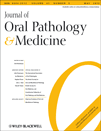
JOURNAL OF ORAL PATHOLOGY & MEDICINE
Transforming Oral Health Through KnowledgeWelcome to the JOURNAL OF ORAL PATHOLOGY & MEDICINE, a distinguished publication dedicated to advancing knowledge within the realms of oral pathology and medicine. Published by WILEY since 1972, this journal has established itself as a critical resource for researchers and practitioners alike, covering a broad spectrum of topics related to oral health and disease. With an impressive array of rankings, including Q1 status in categories such as Oral Surgery and Periodontics, and a prominent position in Otorhinolaryngology, the journal is recognized for its substantial contributions to these fields. Although currently not open access, it remains pivotal in disseminating vital research findings, fostering collaboration and innovation among healthcare professionals. The interdisciplinary scope of the journal also supports its high impact factor and robust Scopus rankings, including a 92nd percentile in Otorhinolaryngology. By providing a platform for original research and reviews, the JOURNAL OF ORAL PATHOLOGY & MEDICINE plays an essential role in shaping future advancements in oral health sciences.

Diagnostic and Interventional Radiology
Unlocking the Future of Radiology Through Open AccessDiagnostic and Interventional Radiology, published by the Turkish Society of Radiology, is a renowned open-access journal dedicated to advancing the fields of radiology, nuclear medicine, and imaging. With its transition to open access in 2022, the journal aims to foster knowledge dissemination and accessibility for researchers, healthcare professionals, and students alike. This esteemed publication, indexed in Scopus, features a robust editorial board and peer-reviewed articles that contribute significantly to the body of work in cardiology, radiology, and related disciplines. The journal currently holds a significant position, reflected in its Category Quartiles ranking—Q2 in Radiology, Nuclear Medicine, and Imaging, and Q3 in Cardiology and Cardiovascular Medicine, highlighting its relevance and impact in these critical medical fields. Research published in this journal is vital for evolving diagnostic and interventional techniques, clearly situating it as a key resource for those seeking to stay at the forefront of radiological science.
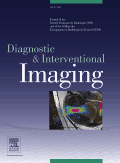
Diagnostic and Interventional Imaging
Unveiling Cutting-Edge Discoveries in Imaging ScienceDiagnostic and Interventional Imaging, published by Elsevier Masson, stands as a prominent journal in the fields of Radiology, Nuclear Medicine, and Imaging. With a significant impact factor and a reputation for high-quality research, this journal is dedicated to advancing the understanding and application of diagnostic and interventional imaging techniques. It has achieved an impressive Q1 ranking across multiple categories including Medicine (miscellaneous) and Radiological and Ultrasound Technology, demonstrating its esteemed position within the academic community. The journal features cutting-edge studies and reviews, reflecting the latest innovations and practices from 2012 to 2024. Researchers, healthcare professionals, and students alike can look forward to accessing valuable insights that drive forward the discipline and improve patient outcomes, as evidenced by its robust Scopus rankings placing it among the top journals in its domain.

Iranian Journal of Radiology
Empowering Professionals with Essential Radiology ResearchWelcome to the Iranian Journal of Radiology, a pivotal platform dedicated to advancing the field of radiology, nuclear medicine, and medical imaging. Published by BRIEFLAND, this journal aims to disseminate high-quality original research, reviews, and clinical studies that contribute substantially to the global scientific community. Established in 2008 and spanning until 2024, the journal provides an essential archive of knowledge in a rapidly evolving discipline. Although it currently holds a Q4 quartile ranking in the 2023 Scopus metrics, it serves as an important resource for both emerging and established researchers looking to submit their work. Located in the Netherlands, the journal is committed to open dialogue and collaboration amongst professionals in the field, reflecting its accessibility and relevance to both practitioners and academics. With its continued growth and commitment to quality, the Iranian Journal of Radiology is poised to enhance understanding and innovation in diagnostic imaging.

Imaging
Illuminating Innovations in Imaging TechniquesImaging, published by AKADEMIAI KIADO ZRT, is an esteemed open-access journal dedicated to the field of medical imaging, established in 2020. With an E-ISSN of 2732-0960 and based in Budapest, Hungary, this journal provides a vital platform for the dissemination of cutting-edge research and advancements in imaging techniques, especially in the realms of radiology, nuclear medicine, and ultrasound technology. While currently positioned in the Q4 category across multiple medical specialties, the journal continues to strive for improvements in visibility and impact, contributing to the evolving discourse in medical imaging. The journal aims to facilitate an inclusive and collaborative environment for researchers, professionals, and students, inviting them to share their findings and insights to enhance the field's development. With open-access availability since its inception, Imaging ensures free and easy access to its content, fostering a greater understanding and appreciation of innovative imaging practices worldwide.
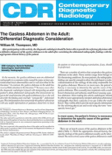
Contemporary Diagnostic Radiology
Exploring the Future of Imaging TechniquesContemporary Diagnostic Radiology is a pivotal journal in the field of medical imaging and radiology, published by Lippincott Williams & Wilkins. With an ISSN of 0149-9009 and an E-ISSN of 1938-1395, this journal serves as an essential platform for disseminating high-quality research and advances in diagnostic radiology and related disciplines. While it is categorized in the lower quartiles (Q4) for its performance in the 2023 rankings in both Neurology, Radiology, Nuclear Medicine and Imaging, and Surgery, its focus on emerging technologies and methodologies in imaging continues to provide valuable insights for practitioners and researchers alike. The journal’s scope includes innovative diagnostic tools, imaging techniques, and case studies, fostering collaboration and knowledge sharing in the medical community. Although it does not offer open access options, its commitment to contributing to the ongoing dialogue in clinical imaging is undisputed, making it an essential resource for professionals seeking to stay abreast of current trends and research in the rapidly evolving landscape of diagnostic radiology.
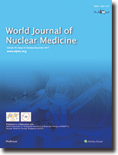
World Journal of Nuclear Medicine
Unlocking the Potential of Nuclear Medicine for AllWorld Journal of Nuclear Medicine, published by THIEME MEDICAL PUBL INC, is a premier peer-reviewed journal dedicated to advancing the field of nuclear medicine. With an Open Access model established since 2011, this journal ensures that high-quality research is accessible to a wide audience, fostering knowledge sharing and collaboration among researchers, clinicians, and students alike. The journal aims to publish innovative studies, reviews, and clinical trials that contribute significantly to both the theoretical and practical aspects of nuclear medicine, enhancing diagnostic and therapeutic techniques within this critical area of healthcare. As the journal continues to grow in visibility and impact, it remains an essential resource for those seeking to stay at the forefront of advancements in nuclear medicine.

European Journal of Radiology Open
Unlocking Insights in Radiology for AllThe European Journal of Radiology Open, published by Elsevier, has established itself as a pivotal platform for disseminating high-quality research in the field of radiology, nuclear medicine, and imaging since its inception in 2014. This open access journal, holding a commendable Q2 ranking in the esteemed 2023 Scopus categorization, seeks to foster a collaborative environment where researchers, professionals, and students can share innovative findings and advancements. Operating under the E-ISSN 2352-0477, this journal contributes to the broader scientific discourse with a commitment to accessibility and transparency, ensuring that cutting-edge research is available to a global audience. The journal's dual focus on rigorous peer review and rapid publication processes underscores its importance within the academic community, aiming to empower professionals with the latest insights in the dynamic landscape of medical imaging.